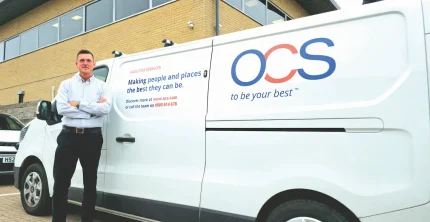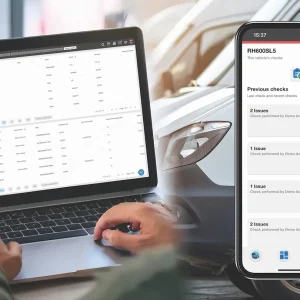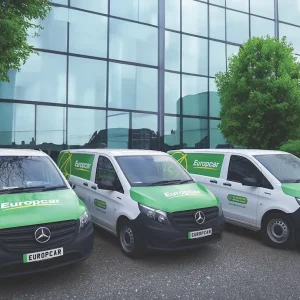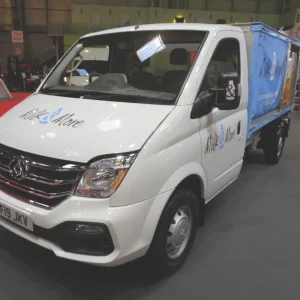
Whether you’re catching the train to work, cheering on your team at a Premier League match or picking up the weekly shop – chances are, OCS will be working behind the scenes.
As one of the UK’s largest facilities management (FM) companies, OCS’s presence is ubiquitous. However, it’s only when you step inside the organisation that the true scale of its operation becomes clear.
With nine core business units spanning hard services, cleaning, catering, public and private sector operations, security and more, OCS has grown into a goliath – particularly since its 2023 merger with Atalian Servest. The company has expanded rapidly through a combination of strategic acquisitions and organic growth, and its fleet operation is catching up fast.
Rebuilding from the ground up
When head of fleet Paul Astbury joined OCS two years ago, he saw an opportunity to build something better from the ground up.
“The foundations were there, but the structure needed modernising,” he recalls. “We had a small team and limited visibility across the fleet; it was clear we needed to evolve to support the scale of the business.”
What followed was a comprehensive transformation. “It was like launching a new fleet department – fast-paced, challenging but full of potential.”
Today, the fleet operation is a model of progress. A newly established structure includes a team of seven fleet administrators, a fleet administration manager, two fleet business partners and soon a dedicated data analyst. All vehicle and fuel supply arrangements have been reviewed and re-tendered. A robust fleet strategy is now in place, and a data-led approach has dramatically improved visibility and control.
From instinct to insight
Data is now the lifeblood of the fleet operation at OCS. “When I first arrived, we had zero data – nothing to base any decisions on. Now we’re building detailed dashboards to show everything from driver performance and fuel usage to electric vehicle viability and training needs.”
With the data analyst joining shortly, the plan is to shift fully into insight-led fleet management. “We want to show our business units where they’re using petrol or diesel, where EV makes sense, where training is needed and how to manage fuel more efficiently. For the first time, we’ll be able to have those conversations properly.”
Greener, smarter… leaner
The OCS fleet is currently around 3,600 strong comprising approximately 2,500 vans and light commercials, 1,000 cars and a range of specialist plant and HGVs. There’s also a grey fleet of around 1,000 where OCS oversees licenses and compliance checks.
Electrification is a major priority. The company has committed to transitioning 100% of its fleet to electric or hybrid by 2034. Company cars will hit that milestone by the end of 2026, with EVs or hybrids now the only options available on its policy.
“When it comes to company cars, we’re well ahead of that target. We operate on a three-year replacement cycle, and since 2024, our car policy has offered only hybrid or electric options. By the end of next year – once the final batch of legacy leases expires – we’ll have completed the transition to a fully electrified company car fleet”, Astbury says.
Incentives include home charger installation for EV drivers and strong OEM partnerships – currently with Nissan and Toyota – which help streamline procurement by simplifying ordering processes, shortening lead times and making it easier to access demo vehicles for driver trials.
“If someone’s nervous about an EV, we’ll get a demo in, let them try it out and educate them on driving it properly. There’s a lot of fear, especially with PHEVs and smaller engines. But we’ve found that once someone drives an EV, the worry disappears,” says Astbury.
The challenge is greater with commercial vehicles. “That’s the hard part,” he admits. “A driver doing 10 jobs a day in a diesel van doesn’t want to stop and charge six times. Range is improving, but commercial EVs haven’t caught up with cars yet. Plus, not everyone can charge at home – especially in rural parts of the UK.”
That’s where data will once again lead the way. OCS is working with telematics and fuel partners to overlay its drivers’ home addresses with the national charging infrastructure, aiming to identify optimal rollout zones for commercial EV adoption. “We already offer home chargers for car drivers, but with vans we have to be more strategic. We need the network to catch up.”
Cultural change through people
The transformation hasn’t just been operational – it’s been cultural. “We recognised the need to strengthen our reputation within the business when it came to fleet,” says Astbury. “Rebuilding confidence was a priority, and we’ve made significant strides in earning trust and delivering real value.”
By placing fleet business partners inside senior leadership meetings, the team has opened new channels of communication – reporting on trends, highlighting upcoming changes and gathering real-world feedback.
And, crucially, they’re developing talent from within, with training as a key focus for the next phase of development.
The plan is to bring another fleet business partner into the team by promoting from within, empowering one of the current administrators to step into a junior fleet business partner role. They’ll begin shadowing one of the existing team members, using that hands-on experience alongside their ongoing apprenticeship training to progress to the next level and create a clear pathway for internal growth.
“We’ve got a sizeable fleet and a small but really strong team of really experienced heads and young, hungry people,” Astbury says. “I started in transport at 17 as an admin and passed my Certificate of Professional Competence (CPC) at 18. I had a great mentor at Veolia, and that’s why I stayed so long. I’m grateful, and I want to give that opportunity that I was given to my team.”
Three administrators are now enrolled in government-funded business apprenticeships. The next step is creating a junior fleet business partner role to support internal progression.
What’s next
The focus for the second half of 2025 is clear: develop a robust, data-driven commercial EV transition plan and continue refining internal systems.
Astbury’s ambition for OCS is to become market leaders – not just within the FM sector, but in fleet management more broadly. “We’ve recently joined the Association of Fleet Professionals (AFP), and we’re keen to engage more closely with them, both to strengthen our network and to access further training and development opportunities for our team.”
They are also making full use of government-funded apprenticeships. “Our first three transport administrators have now started the business admin apprenticeship programme, and the next step is developing our first-line managers – particularly our fleet business partners. By empowering them through structured learning, we’re creating clear pathways for progression and using all available support to invest in our people. We’re on a journey, and we’re only heading in one direction – forward.”
Ultimately, OCS’s journey is one of transformation – evolving a complex, behind-the-scenes fleet into a strategic, sustainable asset that adds real value across the business. “We’ve got a healthy view of fleet data now, a strong team and a clear strategy,” Astbury concludes. “It sounds simple when you say it, but the hard part is doing it. That’s where we’re at now – making it happen.”





